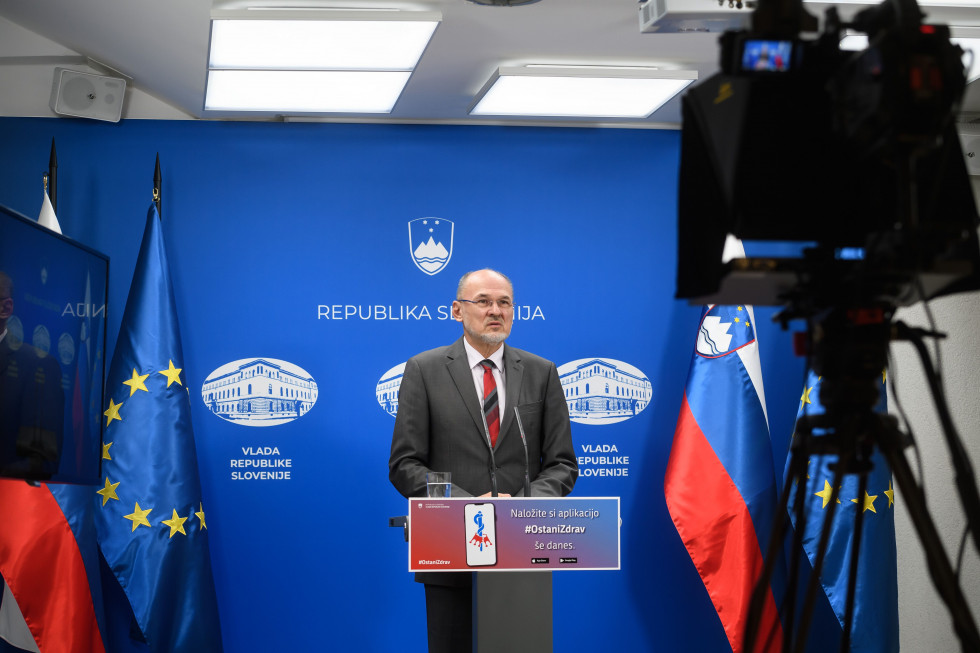In the coming days, the Government will present the action plan approved today to deal with the second wave of the COVID-19 epidemic
On Tuesday 3,391 tests were performed and a record 203 positive cases were found, which is 6 percent of those tested. 86 patients are hospitalised, and 16 need intensive care. One patient died. Just for comparison: In the first wave of the epidemic, the daily record number of positive cases was 61. The highest number of new infections was in the municipality of Ljubljana (37), followed by Kranj (9) and Kamnik (7). With a 14-day incidence rate Slovenia exceeded 80 positive cases per 100,000 population.
According to Kacin, the Government discussed at today's session an action plan of measures to combat the second wave of the COVID-19 epidemic, based on the recommendations of Expert Advisory Group on COVID-19 at the Ministry of Health, which met yesterday with the Prime Minister and key ministers. The Government make the plan public in the next few days.
Kacin also presented another important government decision: the adoption of an Ordinance amending the Ordinance on imposing and implementing measures to prevent the spread of COVID-19 at external border crossings and at internal border control points and in the interior of the Republic of Slovenia.
Andorra, Monaco, San Marino and the Vatican are from now on treated in the same way as the Schengen Area Member States. This means that persons from these countries, if these countries are included in the orange list, will be able to claim an exception when they are allowed to enter Slovenia without quarantine or a negative COVID-19 test.
The Ordinance also provides for recognizing the validity of all COVID-19 tests not older than 48 hours and taken in an EU Member State, a Schengen Member State or by an organisation or individual that are recognised as appropriate and reliable by the Institute of Microbiology and Immunology and the National Health Laboratory of Health, Environment and Food and are listed on the website of the National Laboratory of Health, Environment and Food. This means that tests conducted in accordance with the Decree at the aforementioned institutions in third countries are also recognised as valid.
Additional exceptions to quarantine or to the required submission of a negative test result at border crossings (for red and orange list countries or their administrative units) have been provided for two new cases:
persons crossing the border for familial reasons in order to maintain contact with close family members and returning within 72 hours of entry;
persons under the age of 14 who cross the border together with a close family member who has submitted a negative test result.
All amendments to the Ordinance will enter into force on the day following its publication in the Official Gazette of the Republic of Slovenia.
As to State Secretary Bregant’s announcement of the impending lifting of the recommendation that students in the last primary educational cycle and upper secondary students wear facemasks in situations when it is impossible to maintain an interpersonal distance of less than 1,5 metres, Kacin stressed that it had not been discussed by the Government.


